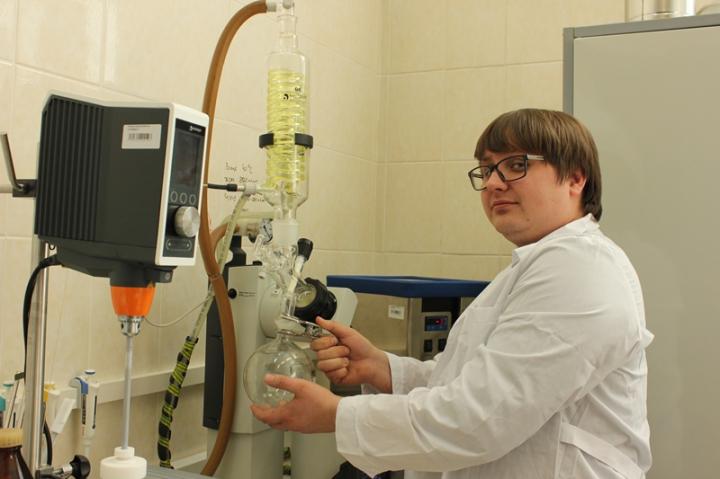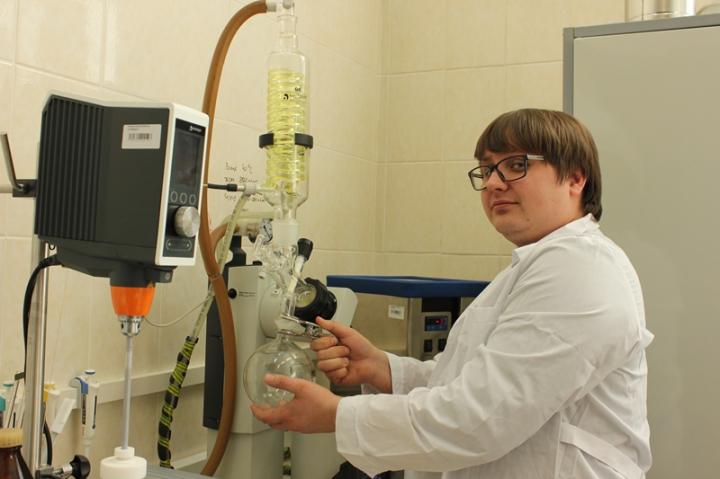
Credit: Tomsk Polytechnic University
Scientists from Tomsk Polytechnic University and the University of Chemistry and Technology (Prague, Czech Republic) have created novel chemical sensors for Raman spectrometers, i.e. the devices that allow determining quantitative and qualitative composition of substances and their structure with high accuracy. TPU scientists have equipped sensors with organic chemical compounds. They have already obtained sensors for determining dyes prohibited in Europe and heavy metals in water at ultralow concentrations.
The latest outcomes of the study have been published in Sensors and Actuators B: Chemical.
A sensor is a multi-layer material based on a thin gold film with the size of 1×0.5 cm. The surface of the substrate is modified into a wave-like structure. Using special reagents, TPU scientists graft organic compounds on the surface of the substrate by a covalent surface modification via diazonium chemistry.
'In the study we demonstrate possibility of creating such chemical sensors. The novelty is that we combined both chemical and physical methods. Our colleagues in Prague prepare substrates by physical methods and we modify organic compounds using chemical methods. Due to this combination we eventually got the opportunity to detect heavy metals at ultralow concentrations. We can monitor trace concentrations of substances. Thus, the sensitivity of sensors for dyes reaches 10-16 mol and for heavy metals it is about 10-14 mol,' says Pavel Postnikov, the Associate Professor of the Department of Organic Substances and Polymer Materials.
'The process of analysis is very simple: we put the sensor into the water and molecules of toxic substances are immobilized on the surface of the substrate. The analysis of dyes is more difficult,' notes Pavel Postnikov. We use an interesting polymer which is water-soluble at room temperature and when heated it turns into insoluble form. Polymer chains capture dye molecules and, when heated, press them to the surface. Then, we take out the substrate and place it in the spectrometer. We get the result in two minutes.'
In the long term, these sensors may be used to monitor liquids in food technology, medicine and environmental studies.
'It takes several minutes to carry out this analysis. Therefore, it can be used on site, for example, one may take samples from the reservoirs and receive an immediate result that would show if there are any toxic substances present in the water even at ultralow concentrations,' adds the researcher.
###
Media Contact
Kristina Nabokova
[email protected]
7-382-270-5685
@TPUnews_en
http://www.tpu.ru/en
Original Source
https://tpu.ru/en/about/tpu_today/news/view?id=3063 http://dx.doi.org/10.1016/j.snb.2017.07.018





